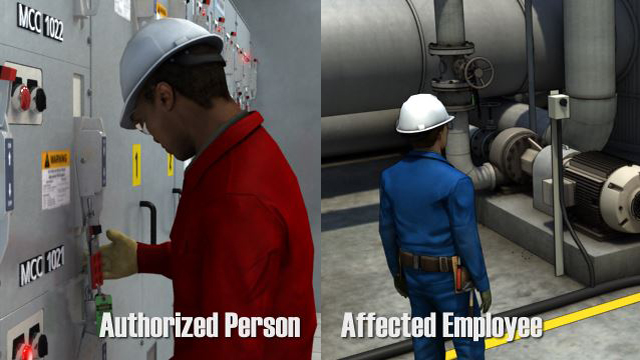




Lockout Tagout for Canada
Don’t count on luck, count on the lock. Protect yourself and your team from unintentional exposure to all types of hidden energy with this course that describes hazardous energy types and energy control procedures, including preparation, shutdown, isolation, lockout, stored energy check, verification, and release of lockout. Additional topics include lockout hardware and administration of an Energy Control Program (ECP). This course is intended for the “authorized employees” who typically perform lockout/tagout procedures. [course outline] Overview The Hazardous Energy Problem The Hazardous Energy Solution Energy Isolation Hazardous Energy Secondary Hazardous Energy Secondary Hazardous Energy Sources Energy Control Procedures Step 1: Preparation Step 2: Shutdown Step 3: Isolation Step 4: Lockout/Tagout Step 5: Stored Energy Check Step 6: Isolation Verification Testing Lockout Hardware Lockout Administration Group Lockout/Tagout Lockout Release Removal of Absent Employee’s Lockout Device
Request a demoCourse Details
Learning Objectives
• Define lockout/tagout
• Describe why hazardous energy is a problem
• Differentiate between an “authorized” and “affected” employee
• List in order and describe the six steps of an effective energy control program
• Describe lockout hardware
• Describe the training requirements for lockout/tagout
• Describe the role of a primary authorized employee during a group lockout
• Describe the procedure for restarting affected equipment
Specs
| Course Level | Intermediate |
| Languages | English, French |
| Compatibility | Audio, Video |
| Based on: | Industry Standards and Best Practices |
Key Questions
What is lockout/tagout?
Lockout/tagout refers to specific practices and procedures to safeguard all workers from the unexpected startup of machinery and equipment or the release of hazardous energy during service or maintenance activities. Lockout/tagout can be defined as the placement of a lock or tag on an energy isolating device, in accordance with an established procedure, ensuring that the energy isolating device and the equipment being controlled cannot be re-energized until the locking device is removed.
What are primary energy sources to be isolated during lockout/tagout?
Primary energy sources include electricity, hydraulics (fluids), and pneumatics (air or vacuum energy).
What are secondary (or stored) energy sources to be isolated during lockout/tagout?
Secondary energy sources include springs, capacitors, accumulators, counterbalance systems, gravity, and inertia.
What is an authorized person or employee?
An authorized person is the one who performs the lockout. This is someone who is familiar with the equipment in question and capable of locking it out properly.
What is an affected employee?
An “affected employee” is an employee that is affected by the lockout. This commonly includes machine operators who need to know that their machine should not be operated.
What are six steps to an effective energy control program?
Six steps to an effective energy control program include preparation, shut down, isolation, lockout/tagout, stored energy check, and isolation verification.
What types of hardware are used to lockout machinery?
Locks and hasps are used to lockout machinery for energy control.
Sample Video Transcript
Hazardous energy can take many forms. Consider the simple task of removing a pump and motor unit from a process. Most people would realize that the electricity to the motor needs to be interrupted and locked out before removal. But there is another source of energy that presents a less-obvious hazard and that some people might not think of. The pump is connected to process piping which probably has pressure within it. Before the pump can be removed, workers must be protected by closing valves or inserting blanks to isolate the pump from upstream or downstream fluid pressure and draining the associated piping.
Course Applies To
Demos + Pricing
Learn more about our courses, get pricing, and see our platform.











